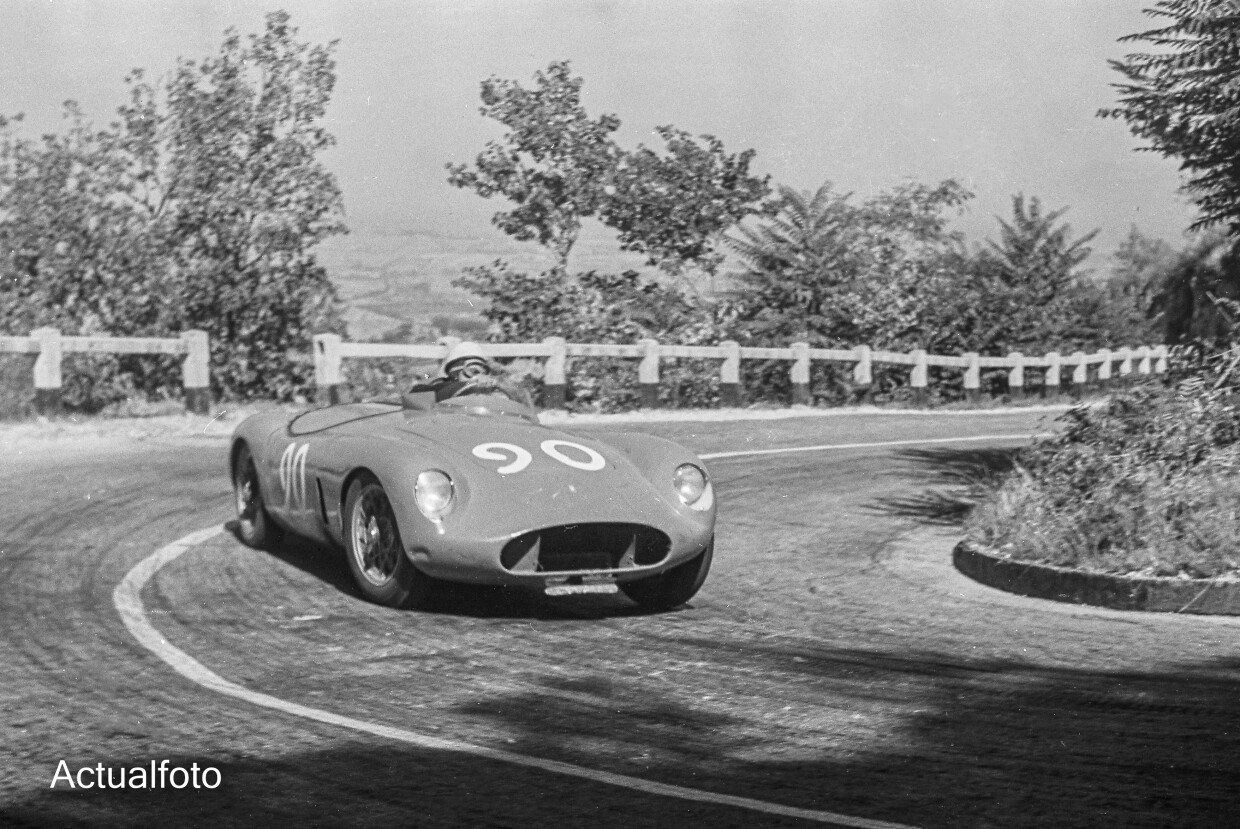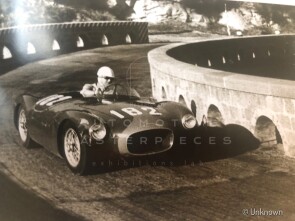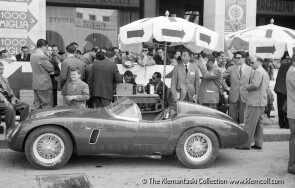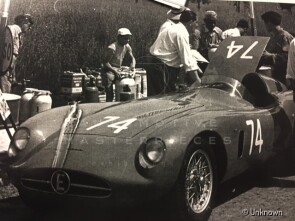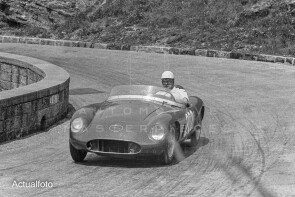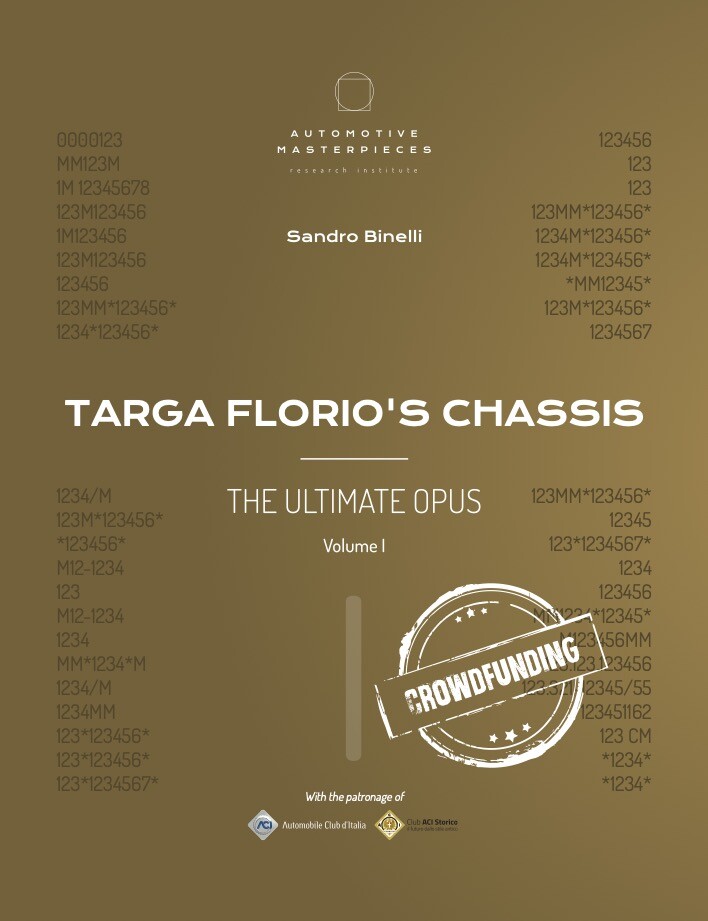
1954 Ermini 357 Sport
ON/OFF
Why am I an Automotive Masterpiece?
K. Famous chassis’ cars
1st chassis, re-punched became the last of 5
L. Limited edition cars
no. 5 manufactured, 1st built
The fierce competition of O.S.C.A. forced Ermini to design a new car, once again. In order to stay competitive with their rivals, the Florentine cars needed a refined and new concept frame to use with the powerful "twin-spark" headed engine. The development of this engine was prolonged due to the difficulty of finding an adequate distribution; problem solved by Magneti Marelli with the creation of a specific distributor. This is why, in early 1953, Ermini officially commissioned Alberto Massimino to design a brand-new chassis, thus abandoning the Fiat parts used up to that time. The tubular frame was built by the Caiani company in Modena, while the new mechanical parts were built in-house according to Massimino's blueprints; it had an independent wheel front suspension system, formed by two overlapping triangles with a helical spring and hydraulic telescopic-coaxial shock absorbers. The rear live axle (with an aluminum differential housing) had "cantilevered” leaf springs, an ingenious thrust arm and torsion bar system. Since 1952 the cars of the Florentine constructor had been registered by the General Department of Motor Vehicles of Florence as Ermini, since the engine was entirely produced in-house. Only In 1955, and thanks to the new project, “AMFIAA" (National Automobile Industry) acknowledged Ermini as a car manufacturer, thereby allowing the factory to begin its own car registration numbering system. The first chassis of the "357" project, equipped with the new twin-spark engine (already planned by Ermini in winter 1951), was presented in March 1954 at the Salone dell’Automobile in Torino. “357” originally stood for the unit displacement of the 1430cc engine but was later used to identify all the cars built on the new chassis with twin-spark engine. The car was completed only in the month of June, bodied by Frua as a barchetta, but the aerodynamic setup of the Turin’s coachbuilder did not convince Ermini. As for the setup of the other remaining chassis, Ermini exploited Massimino's ideas and commissioned Scaglietti to design a sinuous and elegant aluminum body but only three of the five Ermini 357 chassis were bodied by Scaglietti, since Enzo Ferrari, who had an exclusive agreement with the coachbuilder from Modena, was not able to tolerate the competition of the small Florentine factory in "his" own town. For this reason, the other two remaining chassis were bodied by the Fratelli Morelli in Ferrara, shaping the same Scaglietti's line. As for the 1955 season, the new Ermini 357 were the best any technology of that time could achieve, good for fighting on equal terms with more experienced car builders. The 357 Scaglietti made its debut winning the 1100 cc class at the Circuito delle Torricelle. That same year, the Sport class “up to 1500” revived, inducing Ermini to set up a 1500 cc engine for a class that promised to be interesting and hard-fought. Since the basis was the aluminum 1100cc block which, because of its size, could not be bored more than 75 mm, Ermini had to increase the stroke to 81 mm for a total displacement of 1431 cc. Despite the excellent performances of the new engine, the car builder had to cope with his inexperience in the 1500 class, whereas the 1100 racing season was thrilling, to say the least. In any case, only a 1500 cc engine was built, since it was not as balanced as the 1100 unit, "oversquared" (higher rpm and more acceleration) and therefore more reliable. Another twin-spark 1390 cc engine was installed on a 357 chassis, but it was never bodied. As Ermini's health sadly got worse, the spirit necessary for the development of the model "357" faded.
The Ermini 357 Sport with chassis no. 15 55 (originally no. 1055) is the first chassis of the “357” project presented in March 1954 at the Salone dell’Automobile in Torino; it was exposed as a bare chassis, numbered 1055. The car was completed only in June 1954, bodied by Frua as a barchetta. With this shape took part as a works car to 1954 racing season, mainly with Giovanni Buoncristiani driving and always finishing on the podium in class. However, as mentioned above, the Frua’s body did not convince Ermini so, in early 1955, the car was (one of the two) re-bodied by Fratelli Morelli in Ferrara, on the Scaglietti's shape. It’s supposed that, at the same time, the engine was re-punched with no. 15 55. So, this car has now the same (1555) chassis number as the Ermini 357 sport with Scaglietti body and 1431 cc engine, that raced the 1955 Mille Miglia with Libero Bindi. It is, perhaps, a unique case of repetition of the same number punched by the manufacturer on the chassis, reported and certified for both cars by the original circulation documents. Another curious fact is that, ultimately, this car has both the first and last chassis numbers of all (5) 357s produced. Characteristic of this specimen is the air vent, elongated and slightly inclined upwards, towards the rear, with a chromed edge. It is located after the front wheel on the side, near the signature of the Fratelli Morelli bodyshop. Chassis no. 15 55 took part to the 1955 Mille Miglia for the Squadra Corse Ermini, with drivers Enrico Manzini and Corrado Chiarel. From 1954 to the end of its known racing career in 1959, the chassis no. 15 55, both with Frua and F.lli Morelli body, participated to almost 40 races, including some of the most important Italian events, such as the Targa Florio and the Giro di Sicilia; the car had some misfortunes but was often in the top positions in class. The car disappeared from the scene in the early 1960s and, after a long period of oblivion, the car was found in need of a full restoration. The restoration was finally undertaken at the beginning of 2020s. The car is featured in many books, including Sandro Binelli's Mille Miglia Chassis book Volume III and Targa Florio’s Chassis.
